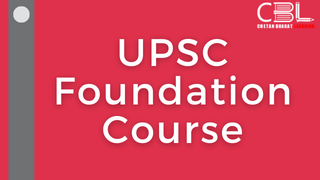
Important for UPSC, State PCS
Prelims: WHITE REVOLUTION . NABARD . NATIONAL DAIRY DEVELOPMENT (NDDB). NATIONAL PROGRAM FOR DAIRY DEVELOPMENT (NPDD)
Mains: General Studies Paper 3 WHITE REVOLUTION
Why in the news ?
Union Home and Cooperation Minister Amit Shah launched the standard operating procedure for ‘White Revolution 2.0 .
About White Revolution 2.0
The original White Revolution, also known as Operation Flood, started in the 1960s and 1970s and made India the world’s largest milk producer. The White Revolution 2.0 builds on this success.
The National Dairy Development Board (NDDB) and the well-known Amul brand supported the White Revolution that increased milk production and improved farmer livelihoods.
White Revolution 2.0 aims to modernise and broaden the cooperative framework while promoting the socioeconomic empowerment of women participating in milk procurement and production.
Key features and Achievements of the White Revolution:–
- Cooperative Model: It introduced the cooperative model in the dairy industry, encouraging farmers to form dairy cooperatives.
- Amul: The most prominent outcome of the White Revolution was the success of the Gujarat Cooperative Milk Marketing Federation (GCMMF), which marketed its products under the brand name Amul.
- Increased Milk Production: The program led to a substantial increase in milk production across the country by improving the quality of livestock.
- Infrastructure Development: Infrastructure such as milk processing plants, cold storage facilities, and transportation networks were developed to support the growing dairy industry.
- Economic Impact: It boosted the income of farmers involved in dairy farming, contributing to the overall economic development of rural areas.
- Replication in Other States: The success of Operation Flood in Gujarat led to its replication in other states, further expanding the reach and impact of the White Revolution across India
Key Components and Initiatives
The initiative promotes the development and strengthening of two lakh new Multipurpose Primary Agriculture Cooperative Societies (MPACS), dairy cooperatives, and fishing cooperatives to provide better support and resources to farmers.
To improve farmers’ financial inclusion and access to banking services, RuPay Kisan Credit Cards for dairy farmers will be implemented nationwide, and micro-ATMs will be installed in dairy cooperative societies.
The government has issued Standard Operating Procedures (SOP) for computerising 67,930 Primary Agriculture Credit Societies (PACS) to streamline procedures and increase efficiency in the cooperative sector.
What is the Current Status of Milk Production in India?
- Global Ranking: India is the world’s top milk producer, with production having reached 231 million tonnes during 2022-23.
- In 1951-52, the country produced just 17 million tonnes of milk.
- Top Milk-Producing States: As per the Basic Animal Husbandry Statistics (BAHS) 2023, the top five milk producing states are UP (15.72%), Rajasthan (14.44%), Madhya Pradesh (8.73%), Gujarat (7.49%), and Andhra Pradesh (6.70%), which together contribute 53.08% of the country’s total milk production.
- Per Capita Availability of Milk: The national per capita availability of milk is 459 grams/ day, which is higher than the global average of 323 g/day.
- However, it varies from 329 g in Maharashtra to 1,283 g in Punjab.
- Milk Production by Animal Type: Almost 31.94% of the total milk production comes from indigenous buffaloes, followed by 29.81% from crossbred cattle. The share of goat milk is 3.30%, and that of exotic cows, 1.86%.
- Contribution of Dairy to the Agriculture and Livestock Sector: The milk group (milk, ghee, butter, and lassi) contributed approximately 40% of the total output value from agriculture, livestock, forestry, and fishing sectors in 2022-23.
- This amounted to Rs 11.16 lakh crore, making it a much larger contributor than cereals to the agricultural sector.
History-
Dr. Verghese Kurien, widely renowned as the “Father of White Revolution” in India, was the first chairman of NDDB. Along with his team, Dr. Kurien commenced work on the launch of the project, which envisaged the organisation of Anand-pattern cooperatives in milk sheds across the country from where liquid milk produced and procured by milk cooperatives would be transported to cities.
Operation Flood was implemented in the following phases:
1. Phase I (1970–1980) was financed by the sale of skimmed milk powder and butter oil donated by the European Union (then the European Economic Community) through the World Food Programme.
2. Phase II (1981–1985) increased the number of milk sheds from 18 to 136; urban markets expanded the outlets for milk to 290. By the end of 1985, a self-sustaining system of 43,000 village cooperatives with 42,50,000 milk producers had been covered.
3. Phase III (1985–1996) enabled dairy cooperatives to expand and strengthen the infrastructure required to procure and market increasing volumes of milk. This phase added 30000 new dairy cooperatives, which led to a total of 73,000.
Challenges and Way Forward
The initiative aims to improve dairy infrastructure, but implementing these projects might be difficult. The program’s success depends on ensuring that infrastructure is developed in a timely and effective manner.
Empowering women farmers and increasing local milk production requires significant training and capacity-building initiatives. Farmers must receive proper training in modern dairy farming techniques and best practices.
Introducing RuPay Kisan Credit Cards and micro-ATMs is an encouraging step, but ensuring that all farmers have access to these services remains challenging. Efforts must be made to reach rural and underserved regions.
It is critical to ensure the long-term viability of expanded dairy output and exports. This includes using environmentally friendly procedures and ensuring the health and well-being of dairy cows.
CBL Practice Questions for Prelims
Which government body is primarily responsible for implementing the “White Revolution 2.0”?
A) Ministry of Agriculture
B) National Dairy Development Board (NDDB)
C) Food Safety and Standards Authority of India (FSSAI)
D) Ministry of Food Processing Industries
Answer: B) National Dairy Development Board (NDDB)
CBL Mains Practice Question
Evaluate the potential socio-economic benefits of “White Revolution 2.0” for rural development in India. How can it contribute to women’s empowerment and employment generation?




Leave a Reply
You must be logged in to post a comment.